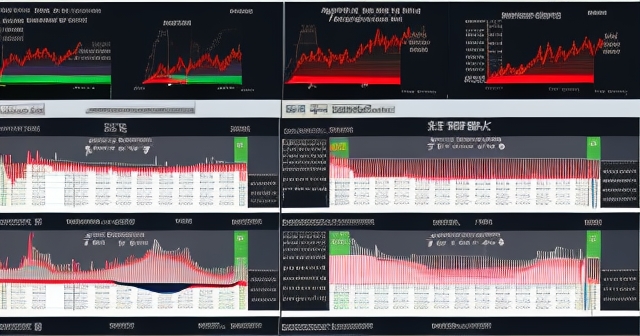
JPY Intervention: Understand Japan’s Currency Strategy for Trading Success
Table of Contents
ToggleUnderstanding JPY Intervention: A Trader’s Guide to Japan’s Currency Battles
The world of foreign exchange, or forex, is a dynamic arena where currencies constantly shift in value against one another. For years, one currency pair that has garnered significant attention from global investors and traders alike is the USD/JPY. The Japanese yen, a major global currency, has recently experienced considerable volatility, leading to actions by Japanese authorities that can have profound implications for market participants. If you’re an investor or trader navigating these waters, understanding why and how Japan intervenes in the currency market is not just academic; it’s crucial for making informed decisions. Think of it like understanding the rules of a game – you can’t play effectively without knowing them.
In this guide, we’ll delve deep into the complexities surrounding JPY intervention. We’ll explore the forces driving the yen’s recent weakness, Japan’s strategy for counteracting it, and what these actions mean for you as a trader. We aim to provide you with the knowledge you need, presented in a clear, structured way, much like a seasoned mentor sharing vital insights.
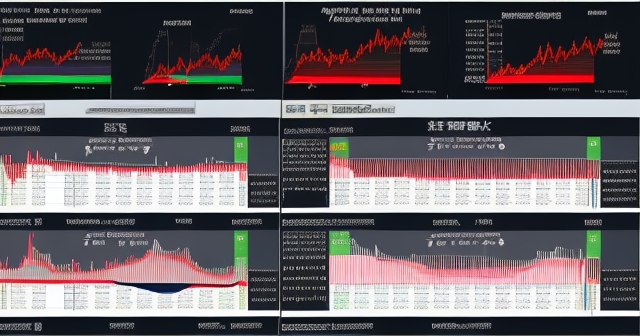
Understanding the dynamics at play can drastically improve trading strategies. Here are some key aspects to consider:
- The impact of interest rate differentials on currency strength.
- The role of government intervention in stabilizing currency fluctuations.
- Market psychology and the reactions of forex traders to economic events.
Why Does Japan Intervene? The Shifting Goalpost
Historically, Japan’s involvement in the currency markets was often aimed at curbing excessive yen strength. A strong yen could make Japanese exports more expensive, potentially hurting the nation’s export-reliant economy. The goal was to weaken the yen to support domestic industries competing on the global stage. However, the narrative has dramatically shifted, particularly since 2022.
Today, the concern is the opposite: excessive yen weakness. Why the change? A rapidly depreciating yen significantly increases the cost of imports – essential goods like fuel, food, and raw materials that Japan relies heavily upon. This translates directly into higher prices for Japanese households and businesses, contributing to domestic inflation. While core inflation has been above the Bank of Japan’s (BOJ) 2% target for an extended period, a weak yen exacerbates this pain point for consumers and importers. So, the primary motivation for intervention has flipped from preventing strength to mitigating the adverse economic impacts of rapid weakness.

Japanese authorities, primarily the Ministry of Finance (MOF), which makes the decision, and the Bank of Japan (BOJ), which acts as the agent executing the trades, are tasked with ensuring market stability. They have repeatedly stated their readiness to take “appropriate action” against “excessively volatile” moves, code words that signal their willingness to step in when they deem currency movements disruptive to the economy.
The Primary Drivers of Yen Weakness: The Interest Rate Chasm
What exactly has been causing the yen’s significant decline, especially against the US dollar? While multiple factors contribute, the most prominent driver has been the vast and persistent interest rate differential between Japan and the United States.
For years, the BOJ maintained an ultra-loose monetary policy, including negative interest rates and yield curve control, to combat deflation and stimulate economic growth. Meanwhile, the US Federal Reserve (Fed) embarked on an aggressive path of rate hikes starting in 2022 to combat soaring inflation. This divergence created a significant gap: interest rates in the US rose substantially, offering higher yields on dollar-denominated assets, while rates in Japan remained near zero.
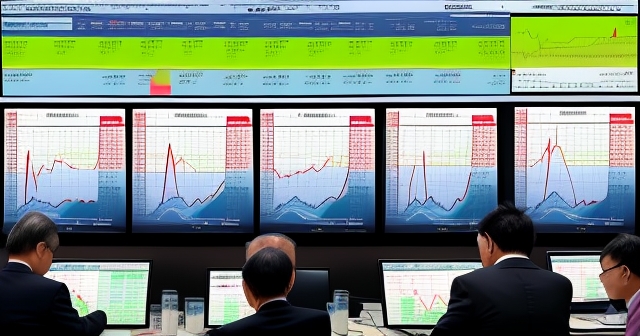
Think of interest rates as magnets for global capital. Higher interest rates attract investors seeking better returns. When US rates are significantly higher than Japanese rates, capital tends to flow out of yen-denominated assets and into dollar-denominated assets. This increased demand for dollars and decreased demand for yen naturally pushes the USD/JPY exchange rate higher, meaning a weaker yen. This dynamic fuels the carry trade, where investors borrow in a low-interest currency (like the yen) and invest in a high-interest currency (like the dollar) to profit from the rate difference. The unwinding of these carry trades can also cause significant market movements.
Beyond interest rates, other factors contributing to recent yen weakness include a structural increase in Japan’s import bill due to higher energy and commodity prices, requiring more foreign currency purchases, and a potential decrease in the rate at which Japanese companies repatriate foreign profits compared to previous decades.
Japan’s Monetary Policy Response: Slow Steps Towards Normalization
While currency intervention is a direct market action, the Bank of Japan’s monetary policy is the fundamental tool that influences the underlying value of the yen. For years, the BOJ stood out among major central banks for its commitment to extreme easing.
However, facing persistent inflation and pressure from the weak yen, the BOJ has taken tentative steps towards normalizing its policy. In March 2024, it finally ended its negative interest rate policy, raising the target rate from -0.1% to a range of 0%-0.1%. This was a significant symbolic step, ending an era of unconventional policy.
More recently, in July 2024, the BOJ took a further step, hiking its policy rate again to 0.25%. BOJ policymakers, including Governor Kazuo Ueda, have signaled that further gradual rate hikes are possible, contingent on inflation remaining at or above their 2% target and wage growth supporting sustainable price increases. Some analysts estimate the neutral rate for Japan (a rate that neither stimulates nor hinders the economy) could be somewhere between 1% and 1.5%.
| Year | Action | Target Rate |
|---|---|---|
| 2024 | End of Negative Interest Rate Policy | 0%-0.1% |
| 2024 | Policy Rate Hike | 0.25% |
Despite these moves, the BOJ remains cautious. Aggressive rate hikes could risk derailing Japan’s fragile economic recovery, which still faces headwinds in areas like consumption. Furthermore, higher interest rates increase the government’s borrowing costs, a significant concern given Japan’s substantial public debt. This delicate balancing act means the BOJ is unlikely to hike rates as rapidly or aggressively as the Fed did, implying the interest rate differential, though potentially narrowing, is likely to persist for some time, continuing to exert pressure on the yen.
Recent Intervention Efforts: Unveiling the Scale and Secrecy
When diplomatic warnings fail to curb what authorities view as excessive volatility, Japan resorts to direct currency intervention. This involves the BOJ, acting on behalf of the MOF, buying or selling yen against other currencies, primarily the US dollar. To support the yen, they buy yen and sell dollars. This reduces the supply of yen in the market and increases the demand for it, aiming to push its value higher.
Intervention is often shrouded in secrecy. Officials typically do not confirm intervention in real-time, preferring to maintain ambiguity to keep speculators guessing. Confirmation often comes later through monthly BOJ data that details intervention amounts. However, markets can often detect intervention by observing sudden, sharp moves in the USD/JPY pair that occur without clear news triggers, coupled with reports from financial institutions that executed the trades.

Since 2022, Japan has intervened multiple times. Notable confirmed interventions occurred in September and October 2022. More recently, large-scale interventions were suspected in April and May 2024. Official data later confirmed that Japan spent a record 9.7885 trillion yen (around $62 billion) in May 2024, likely spread across April 29 and May 1, actions taken after the yen briefly touched a 34-year low of 160.245 against the dollar.
The most recent suspected interventions occurred in mid-July 2024, following the yen hitting a 38-year low of 161.96 on July 3. Market participants strongly suspect significant interventions on July 11/12 and again on July 15/16. Based on anomalies in the BOJ’s current account data for financial institutions, analysts estimated a possible intervention amount of around $22 billion (3.17-3.57 trillion yen) on July 11/12. Further reports and market movements suggest another large operation, potentially totaling around 6 trillion yen ($13.5 billion last Friday plus amounts on Thursday), last week. These figures, if confirmed, highlight the massive scale of Japan’s efforts to stabilize its currency.
| Date | Intervention Amount (in trillion yen) | Remarks |
|---|---|---|
| May 2024 | 9.7885 | Record spending confirmed |
| July 11 | ~3.17-3.57 | Suspected intervention |
| July 15 | ~6 | Large operation suspected |
Analysts suggest recent interventions might be focusing not just on the speed of the yen’s decline but also on defending specific levels, with the 160 USD/JPY mark appearing to be a key battleground for policymakers.
The Economic Toll of a Weak Yen: A Double-Edged Sword
As we’ve discussed, a weak yen is a double-edged sword for the Japanese economy. On one side, it offers benefits:
- Boosts Exports: Japanese goods become cheaper for foreign buyers when the yen is weak, increasing demand and boosting profits for large exporters like automobile manufacturers and electronics companies.
- Increases Tourism Revenue: For foreign visitors, travel and expenses in Japan become significantly more affordable, attracting tourists and boosting the service sector.
- Increased Value of Overseas Profits: When Japanese multinational companies repatriate profits earned in foreign currencies, those profits are worth more in yen terms.
However, the negatives in the current environment appear to outweigh the positives for many, especially ordinary citizens and smaller businesses:
- Higher Import Costs: This is the most direct and painful impact. Prices for imported energy, food, raw materials, and manufacturing components soar, hitting households and businesses directly.
- Inflationary Pressure: Increased import costs are a major contributor to inflation. While the BOJ welcomes *sustainable* inflation driven by wage growth, inflation fueled by a weak yen erodes purchasing power and lowers living standards for many. Core inflation (excluding fresh food) in Tokyo has remained stubbornly above 2%, highlighting this pressure.
- Reduced Purchasing Power Abroad: For Japanese citizens traveling or studying overseas, their yen buys less, making foreign expenses significantly higher.
- Uncertainty for Businesses: Volatile exchange rates make business planning difficult, especially for companies relying on imports or managing global supply chains.
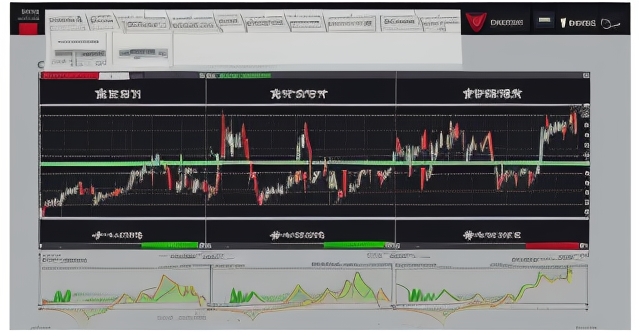
This economic pain, felt most acutely by households and retailers, is a significant factor compelling the MOF to intervene, even though such actions can be costly and controversial.
Monetary Policy vs. Intervention: Which Tool Prevails?
Policymakers have two main levers to influence currency values: monetary policy (setting interest rates) and direct currency intervention (buying/selling currency). Ideally, these tools work in concert. A central bank raising interest rates fundamentally supports its currency by increasing its yield attractiveness. Intervention provides a direct, immediate push against rapid, unwanted movements.
In Japan’s case, the challenge has been the asynchronous nature of monetary policy globally. While the BOJ maintained ultra-low rates, other central banks hiked aggressively. This created a fundamental force (the rate differential) pushing the yen weaker, against which intervention acts only as a temporary countermeasure.
Think of it like trying to hold a heavy door closed against a strong wind. Monetary policy is the underlying structure of the doorframe and hinges (the fundamental support). Intervention is you physically pushing against the door. If the wind (rate differential) is strong enough, you might be able to hold it for a while, but it’s tiring and the force is constant. Only when the wind subsides (rate differentials narrow) or the doorframe is strengthened (monetary policy changes) does holding the door become easier.
Market participants are keenly watching for signals from officials. Statements from Finance Minister Shunichi Suzuki or top currency diplomat Masato Kanda warning against “excessive volatility” are often interpreted as precursors to intervention. While intervention can provide short-term relief and buy time, its long-term effectiveness is limited unless the underlying economic fundamentals, particularly the interest rate gap, also begin to shift. The BOJ’s gradual steps towards rate hikes are seen as a more fundamental way to address yen weakness than repeated intervention alone.
Market Reactions and Trading Implications
For investors and traders, understanding the dynamics of JPY intervention and the underlying forces is vital. Currency markets are highly sensitive to unexpected actions or even the *threat* of action from central banks and finance ministries. When intervention is suspected or confirmed, it can cause abrupt and significant price movements.
How do markets react? Large-scale intervention to *buy* yen (sell dollars) can cause the USD/JPY pair to drop sharply in a short period. This is the direct impact of the authorities flooding the market with dollars and soaking up yen. Traders who were positioned for a weaker yen (long USD/JPY) might be forced to quickly close their positions to limit losses, further accelerating the downward move in the pair. This unwinding of positions, especially carry trades, can amplify the impact of the intervention itself.
Market participants are constantly trying to anticipate when intervention might occur. They watch for key technical levels (like 160 USD/JPY), look for divergences between the yen’s movement and fundamental drivers, and listen closely to official rhetoric. Trading around potential intervention requires a keen understanding of market psychology and risk management.
If you’re navigating the forex markets or exploring other leveraged instruments like CFDs, choosing a reliable and robust trading platform is essential. Moneta Markets, an Australian-based platform offering over 1000 financial instruments, including a wide range of forex pairs, provides options for both novice and experienced traders. Understanding market events like JPY intervention, combined with using a well-equipped platform, can help you approach the markets more strategically.
Navigating JPY Volatility as a Trader
Given the potential for sudden, large moves caused by intervention or shifts in market sentiment, how can you, as a trader, navigate JPY volatility effectively?
Firstly, stay informed. Monitor economic data releases from both Japan (CPI, GDP, trade balance) and the US (inflation, employment, Fed statements). Pay close attention to speeches and statements from BOJ and MOF officials, as their words can signal future policy intentions or intervention likelihood. While technical analysis is crucial for identifying trends and levels, fundamental analysis (understanding the underlying economic drivers) provides context, especially in the case of policy-driven events like intervention.
Secondly, practice robust risk management. High volatility means the potential for larger and faster losses. Use stop-loss orders to limit your downside risk. Consider position sizing carefully – trading smaller amounts relative to your account size during periods of high uncertainty. Avoid over-leveraging, as this can amplify losses significantly if the market moves against you unexpectedly.
Thirdly, understand that intervention is not a magic bullet. While it can cause temporary price reversals, it doesn’t necessarily change the long-term trend dictated by fundamentals like interest rate differentials. Traders should not assume that intervention will permanently reverse a trend, but rather see it as an event that can create trading opportunities or risks in the short term.
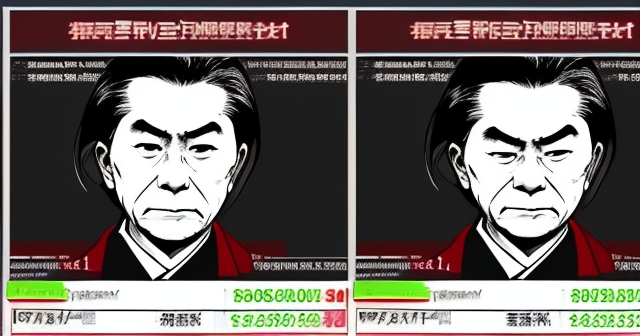
Choosing a trading platform that offers reliable execution and risk management tools is paramount when dealing with volatile markets. The flexibility and technological capabilities of platforms like Moneta Markets, supporting popular options like MT4, MT5, and Pro Trader, combined with features like high-speed execution and competitive spreads, can significantly enhance your trading experience, helping you react quickly when market events unfold.
The Future of JPY and Intervention: An Uncertain Path
What lies ahead for the Japanese yen and the likelihood of future intervention? The path is fraught with uncertainty and depends on several key factors:
- Bank of Japan Policy: Will the BOJ continue its gradual path towards normalization with further rate hikes? The pace and scale of future hikes will depend on domestic inflation trends and economic growth. More significant hikes would fundamentally support the yen.
- US Federal Reserve Policy: When and how aggressively will the Fed begin to cut interest rates? Fed rate cuts would narrow the US-Japan interest rate differential, reducing the pressure on the yen. Softening US inflation data, such as the recent PCE data, increases the likelihood of Fed cuts.
- Global Economic Conditions: A global slowdown could increase demand for safe-haven assets like the yen, potentially leading to yen appreciation regardless of rate differentials. Conversely, strong global growth might reinforce carry trade dynamics.
- Geopolitical Risks: Escalating geopolitical tensions (like conflicts in the Middle East or uncertainties surrounding trade policies) can boost the yen’s appeal as a traditional safe-haven currency, leading to strengthening demand.
- Inflation Trends: The persistence of inflation in Japan (Tokyo CPI) will continue to pressure the BOJ to consider further action, either via policy or intervention.
Japanese authorities are likely to remain vigilant, ready to intervene if they perceive currency movements as “excessively volatile” or detrimental to the economy. However, the sheer scale of global currency markets means that intervention can only ever be a delaying tactic or a means to smoothen rapid moves; it cannot indefinitely defy fundamental economic forces. The battle for the yen’s value is far from over, and it will continue to be a major focus for global financial markets.
Conclusion: Mastering the Dynamics of JPY for Trading Success
The recent history of the Japanese yen is a compelling case study in the interplay of global monetary policy, economic fundamentals, and direct market intervention. From combating historical yen strength to battling recent weakness, Japan’s approach to its currency has evolved significantly.
For you, whether you are a new investor or an experienced trader, understanding the drivers behind JPY volatility – the yawning interest rate gaps, the impact on imports and inflation, the delicate balancing act faced by the Bank of Japan, and the tactics behind currency intervention – is invaluable. These macroeconomic forces are not abstract concepts; they directly influence the price movements you see on your trading screens.
By combining a solid grasp of these fundamental dynamics with sound trading principles, including diligent risk management and utilizing efficient trading platforms, you can approach the complexities of the JPY market with greater confidence and insight. Remember, knowledge is power in the financial markets, and by continuously learning about events like JPY intervention, you equip yourself to navigate potential opportunities and risks more effectively.
For those interested in applying this knowledge within the foreign exchange market, finding a brokerage that supports your trading goals is crucial. If you are seeking a regulated and globally accessible forex broker, Moneta Markets offers multiple country regulatory certifications, including FSCA, ASIC, and FSA. They provide features like segregated client funds, free VPS, and 24/7 multilingual customer support, making them a comprehensive choice for many traders aiming to execute strategies based on market analysis.
jpy interventionFAQ
Q:What influences the Japanese yen’s value the most?
A:The interest rate differential between Japan and other countries, particularly the US, is a primary factor affecting the yen’s value.
Q:How does Japan intervene in the currency markets?
A:Japan intervenes by buying or selling yen against other currencies, usually to combat excessive volatility or weakness in the yen.
Q:What are the main risks of a weak yen?
A:A weak yen can lead to higher import costs, increased inflation, and reduced purchasing power for Japanese citizens abroad.
You may also like
Calendar
| 一 | 二 | 三 | 四 | 五 | 六 | 日 |
|---|---|---|---|---|---|---|
| 1 | 2 | 3 | 4 | 5 | 6 | 7 |
| 8 | 9 | 10 | 11 | 12 | 13 | 14 |
| 15 | 16 | 17 | 18 | 19 | 20 | 21 |
| 22 | 23 | 24 | 25 | 26 | 27 | 28 |
| 29 | 30 | 31 | ||||
發佈留言
很抱歉,必須登入網站才能發佈留言。